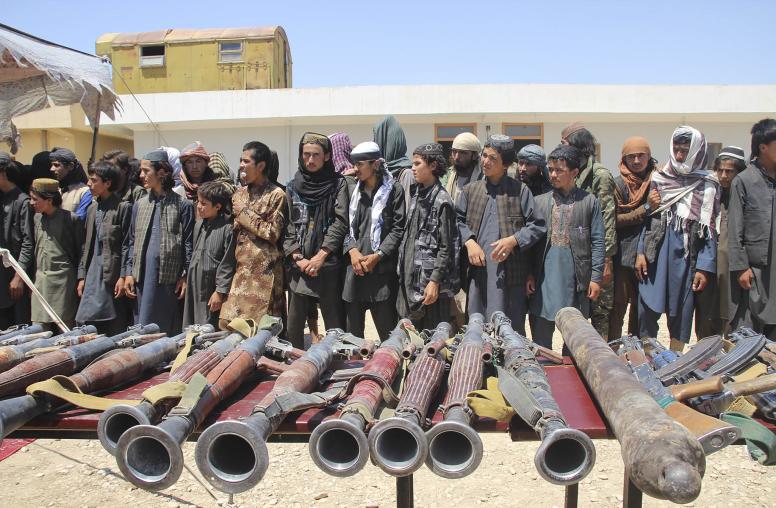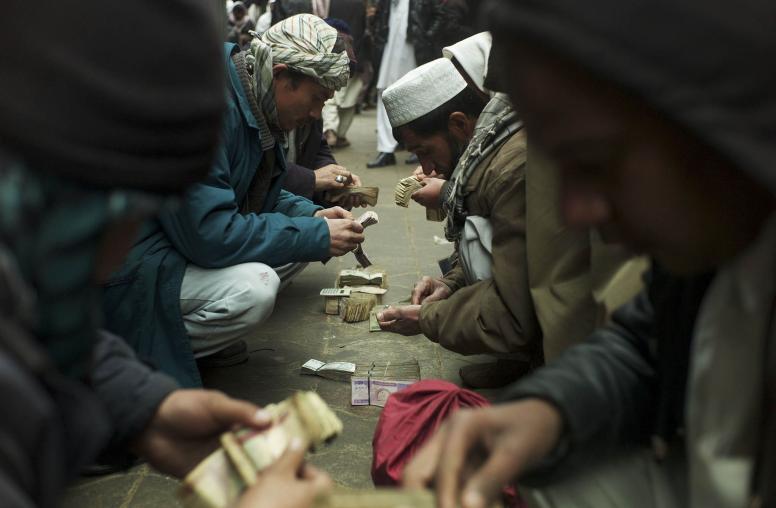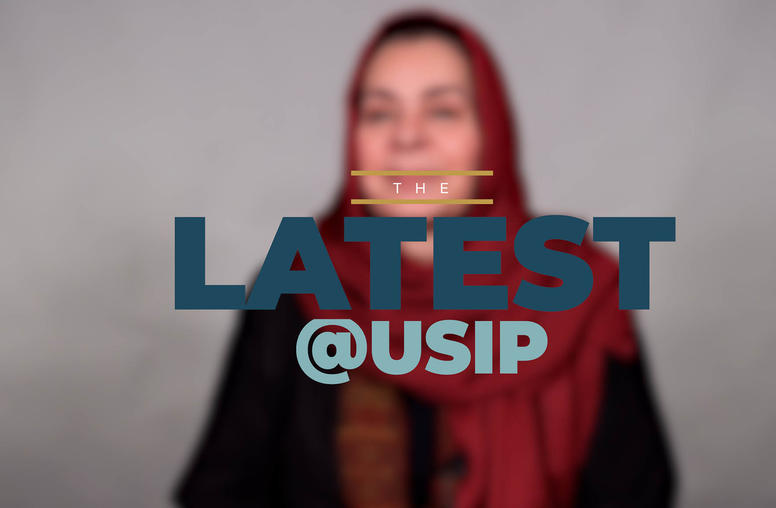After 2014: Managing the Transition in Afghanistan
USIP hosted an event in which experts look at building the Afghan economy in anticipation of the big transition in 2014, when American and NATO forces will finish turning responsibility for the country's security to the Afghan government. It's also when, a new World Bank report suggests, the bulk of foreign assistance, now keeping the Afghan economy alive, will begin to dry up.
December 14, 2011
Afghanistan’s total public spending last year was approximately $17 billion, but most of it, $15.7 billion, was foreign assistance.
That means the country will have enormous challenges as it looks to 2014, when all American forces, and much of the aid that comes with them, leave the country.
USIP hosted an event Dec. 13 at which a new World Bank report, “Transition in Afghanistan: Looking Beyond 2014,” was presented by the World Bank’s Ernesto May. There are a host of unanswered questions in Afghanistan, with security issues chief among them. But another big question is how the country will manage the economic void left by the exodus of foreign assistance as American and other NATO forces leave the country. So far, there are no clear answers. But there is little doubt 2014 will have a large impact.
“Experience suggests that withdrawals of international troops reduce civilian aid, and with implications for economic growth, fiscal sustainability and service delivery,” according to the report’s executive summary. “Potential financing gaps in the budget could threaten security and recent development progress, creating a sense of urgency for both the government and the donor community.”
Afghanistan is one of the world’s largest recipients of aid – only a few countries or regions, including Liberia, the West Bank and Gaza, receive as much, according to the World Bank report. But not all the money for Afghanistan is spent in Afghanistan, the report says.
Cumulative U.S. spending for the Afghanistan mission is about $444 billion – or $119 billion in fiscal year 2011 alone. Most of that spending does not reach Afghanistan because it generally funds salaries of international soldiers, purchases of military hardware and other things. But there is a larger problem with the inevitability of the foreign assistance drawdown, according to the report.
While Afghanistan’s domestic revenues are projected to increase from 10 percent of GDP to nearly 18 percent by 2022 – largely due to new tax and mining revenues – the cost of security and non-security issues is almost twice the size, the report said.
J. Alexander Thier, assistant to the administrator and director of the office of Afghanistan and Pakistan affairs at USAID, and a panelist at the event, said that in the last many months, the focus of American aid is on creating sustainable programs. And, he said, much progress has been made on the development front even as statistics show “dramatic increases” in security incidents that reflect just how fragile the situation on the ground still is.
But what keeps him up at night? It is the need for a long-term plan to give Afghanistan the capacity to manage the economic transition it is facing in 2014.
“How do we create an Afghan state and economy that is sufficiently resilient to manage through the transition both from a political and governance as well as an economic perspective?” Thier said. Thier used to manage Afghanistan programs for USIP before joining USAID. He said USAID has addressed many of the issues raised in the World Bank report, including economic growth, institutional capacity and “human capacity development” in Afghanistan. But in the end, it’s a question of preparing the country for a fundamental change to its economy. And even with billions of dollars in mining potential, the country still has a far way to go to be economically sustainable.
“We have to move away from a donor economy to one that is based on the entrepreneurial spirit of Afghanistan,” he said, noting both the looming infrastructural and governance challenges that still exist – and the importance of the Afghan government taking the lead to address them. Panel member Stanley Byers, director of the Afghanistan-Pakistan Directorate at the National Security Council said that as the transition grows near, he fears resources needed to develop the fledgling economy will be diverted. For example, if rising violence forces the government to allocate more of its spending on security needs, investments in infrastructure or human resources will dry up and the capacity to build the economy will suffer.
Byers believes regional neighbors should be encouraged to invest in Afghanistan following demonstration projects that show it’s worth investing in. “The reality is, there is a lot of money in the region,” he said.



